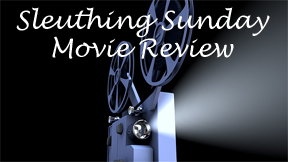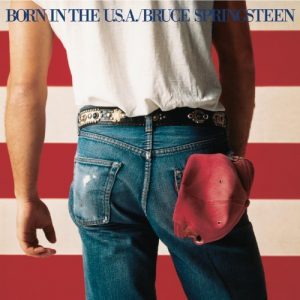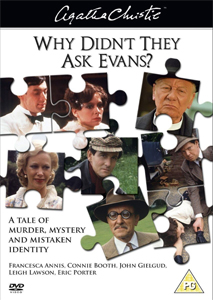In the 1934 book, it takes a long time to find out “Why Didn’t They Ask Evans?” It seems even longer in the 1980 British TV movie adaptation – which clocks in at 3 hours, as that’s how TV movies were often done back in the day.
Pat Sandys’ faithful and thorough adaptation of Agatha Christie’s novel retains the flaws, and directors John Davies and Tony Wharmby (later an “X-Files” helmer) add stiff 1980s British TV staging. But it’s also wonderfully cast. Just as I could’ve gone for more books featuring Frankie and Bobby – the rich girl and poor boy who were childhood friends and reunite as curious amateur sleuths – I could’ve gone for more movies with these two.
Frankie and Bobby
Francesca Annis plays Frankie as plucky and headstrong – which is why she’d be cast as Tuppence in “Partners in Crime” three years later. James Warwick plays Bobby as a precursor to Hugh Fraser’s version of Hastings in TV’s “Poirot,” easily distracted by beautiful women in distress. I’m looking forward to seeing how he adds more self-assurance to play Tommy in “Partners in Crime.” But there’s no disputing the chemistry between Annis and Warwick.

“Why Didn’t They Ask Evans?” (1980)
Directors: John Davies, Tony Wharmby
Writers: Pat Sandys (teleplay), Agatha Christie (novel)
Stars: Francesca Annis, John Gielgud, Bernard Miles
Strong supporting turns come from Eric Porter as Dr. Nicholson, who wears coke-bottle glasses and runs a shady drug-rehab clinic; Leigh Lawson as Roger Bassington-Ffrench, a gentleman of the manor who becomes interested in Frankie when she shows up “concussed” on his doorstep; and Madeline Smith as Moira Nicholson, Bobby’s primary female distraction.
Continuing the theme of “Before they were a Christie star” casting curiosities is Joan Hickson as the gossipy middle-aged Mrs. Rivington. Hickson would play elderly Miss Marple only four years later, evidence of what hair, makeup and wardrobe contribute to a character.
As I noted in my review of the novel, also published as “The Boomerang Clue,” Christie’s story is overstuffed with characters (Evans is probably the 20th most important character) and plot points. “Evans” doesn’t have plot holes, but it relies heavily on conveniences. These things could plausibly happen, but a reader has to be quite forgiving.
A plot so complex it borders on implausible
(SPOILERS FOLLOW FOR THOSE WHO HAVEN’T READ THE BOOK.)
The overly complex nature starts in the opening sequence when Bobby finds a dying man on the rocks, having fallen (or been pushed) from the cliffside. Roger, the obvious suspect and indeed the one who pushed the man, comes upon the scene and replaces the man’s photo of Moira with a photo of the man’s sister. Why would Roger just happen to have a photo of the man’s sister, ready to swap out?

Next, Roger and his accomplice, Moira, have many opportunities to snuff out Frankie and Bobby and they generally do not try very hard. Granted, it’s bad luck on their part that Bobby inexplicably survives a poisoning.
Yes, Roger is smitten with Frankie, and it’s plausible that even a sociopathic long-con artist would hesitate to kill her. But still, we have a plodding story where the villains’ chess moves have weirdly long gaps between them.
And then there’s the mystery’s structure, which is unique yet also demonstrates why it’s not an often-used structure. Frankie and Bobby are investigating a case from a once-removed perspective. First, they have to find out what the murdered man was investigating, then pick up where he left off. The finish line always seems so far away.
They do ask Evans … eventually
So many details have to be wrapped up that “Evans” has three concluding sequences over its final 30 minutes: our heroes’ showdown with Moira, their meeting with Evans, and Frankie’s confrontation with Roger. I appreciate that Roger explains the whole thing to Frankie in “Bond”-villain style; Christie (and faithful adapter Sandys) owes us that.
Tonally, Davies and Wharmby are consistent with a jaunty mood that emphasizes Frankie’s and Bobby’s clever (but often not clever enough) maneuverings through the case more so than the plot points. Even when our heroes are bound and gagged, we’re cued that this is one of Christie’s playful stories. The story includes one key instance of impersonation, and it’s pulled off quite well, visually.
I think many fans like “Why Didn’t They Ask Evans?” more than I do, as the 2022 miniseries also ran 3 hours and has high marks on IMDb. I haven’t yet seen the 2009 episode of “Marple” that cuts the runtime in half; it has lower ratings than the 1980 and 2022 pieces.
I’m curious to find out if the narrative can be tightened while retaining the unquestionable strength of the piece: the interplay between Frankie and Bobby.
Every week, Sleuthing Sunday reviews an Agatha Christie book or adaptation. Click here to visit our Agatha Christie Zone.

